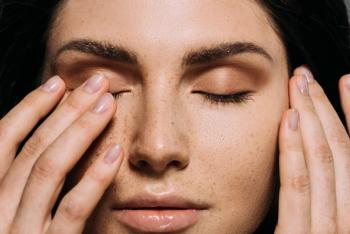
Study Investigates Moisturizers Containing Ceramides for Skin Dryness
The investigation of the efficacy of moisturizing ceramide cream vs hydrophilic cream was published in the journal of Dermatologic Therapy.
Researchers investigated the 24-hour, 7-day, and 28-day moisturization efficacy of a ceramide- containing moisturizer in senile xerosis treatment.1 According to the authors, direct replacement of decreased ceramides in the skin can be effective for skin hydration, barrier function, and pH.
The study was a split-site, double-blinded, randomized, controlled trial that was conducted in 24 patients, 91.7% females, a mean age 54.83 ± 5.45 years, and with mild to moderate xerosis, who were randomized to receive ceramide-containing moisturizer or hydrophilic cream. Each patient used treatment daily applied on each side of the shin for 24 hours. Then for 28 days, the patients applied twice daily and followed by 7 days of no treatment.
Data from the study showed that a single application of ceramide-containing moisturizer increased skin hydration, while improving transepidermal water loss (TEWL) and skin pH for up to 24 hours.
After 28 days of twice-daily application of either cream, it was found that the skin hydration, barrier function, and pH observed in those treated with ceramide-containing moisturizer had a greater effect at all-time points than its counterpart. On day 28, there was a statistically significant decrease of hemoglobin index, wrinkle, and texture in the ceramide treated arm.
“The 7-day post-moisturizing efficacy on the ceramide treated side was superior for skin hydration, TEWL, skin pH, and wrinkle,” wrote the study authors. “Thus, the ceramide-containing moisturizer can be a novel promising treatment for senile xerosis.”
Reference:
1. Lueangarun S, Tragulplaingam P, Sugkraroek S, Tempark T. The 24-hr, 28-day, and 7-day post-moisturizing efficacy of ceramides 1, 3, 6-II containing moisturizing cream compared with hydrophilic cream on skin dryness and barrier disruption in senile xerosis treatment. Dermatol Ther. 2019;32(6):e13090. doi:10.1111/dth.13090
Newsletter
Like what you’re reading? Subscribe to Dermatology Times for weekly updates on therapies, innovations, and real-world practice tips.

















